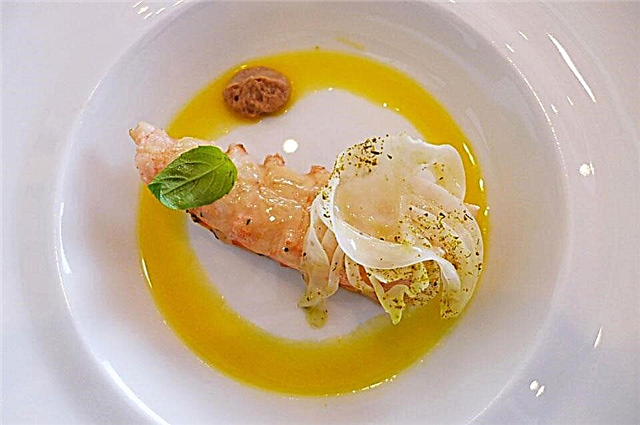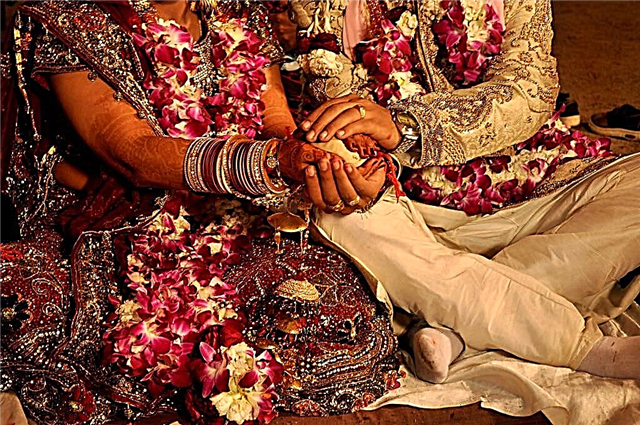Perhaps India is the most exotic of all Asian countries: only here you can see such a variegated multicolor of colors and hear such a wide range of sounds. Only here you can contemplate a cow walking importantly along a city street next to a Mercedes and a cycle rickshaw; and no one has the right to drive her away, but can only carefully go around. And only in India, everyone boldly enters the muddy, dirty waters of the Ganges, relying on his divine powers, and take a bath. Nowhere else will you hear such unearthly vocals pouring in a continuous iridescent stream and you will not see such gutta-perky dancers wriggling so that they seem to have no bones. It is in this densely populated country that the insane luxury of some is combined with the appalling poverty of others. And the local chastity of lovers needs to be learned by jaded Europeans, who have completely forgotten about such concepts as the immaculate purity and sublimity of love feelings, and are accustomed to do without spiritual and heartfelt preludes in their relationships. The population here is divided into numerous castes, each of which has its own customs, so there are a lot of them among the Indian people.
The cult of the sacred animal

The tradition of deifying animals has its roots in ancient times, but is still held sacred in the country; although the violation in the form of insulting a cult animal is no longer punished as severely as before, when a person who cursed the symbol of holiness was sacrificed to him. But the law is still harsh on those who dare to carelessly treat this or that representative of the four-legged: for this they face expulsion from the country.
Each state has its own animal cult, and in order not to get into an unpleasant situation, you need to find out who is sacred in a given area, and try to be as respectful as possible to the sacred object. The main cult in the country is the cow, which can lie quietly on the highway until she gets tired of it.

It is not allowed to enter the temples in leather shoes and wear leather jewelry. In honor of the sacred animals, special celebrations and wide festivals of Taipusam are organized, in which the entire population, regardless of castes and estates, takes part. The main purpose of such actions is to show the victory of good over evil, when Indians, driven to ecstasy, even pierce their hand or leg as a sign of their readiness to sacrifice themselves to the totem deity.
Indian dances

Probably, there are few Indians among those who do not know how to dance at all, because according to established customs, dances are taught almost from infancy.
Failure to dance is considered bad form, and the one who succeeds in this business is praised to the skies: a talented dancer enjoys universal love and respect. Because every dance is not just graceful movements, but a certain composition that contains a clear idea, meaning, understandable to sophisticated spectators. The more expressively this is conveyed by the dancers, the higher the assessment of their skill, the virtuosity of which causes a storm of enthusiastic cries from the audience.
Greetings and gestures

They even have the usual handshake, accepted everywhere when they meet, has its own characteristics: it is considered indecent to greet a stranger and women. It is also unacceptable to hug and kiss, meeting and saying goodbye even to well-known people - the most acceptable at such moments is "namaste" - arms folded at chest level or palm raised up.
In order not to get into an awkward position, you need to know the interpretation of common gestures: you cannot publicly snap your fingers, wink at women, clap your hands, as this will be regarded as an insult or an unpleasant hint.
The word "toilet" in the meaning of a place where one can make natural departures should be replaced by the strange phrase "number one" when there is a need to find out the location of this object. They are especially demanding of sign language in the provinces: conservative residents of which strictly monitor the behavior of visitors.
Ritual ceremonies

Until now, the main method of burial is considered to be the burning of the body of the deceased, followed by scattering the ashes over the Ganges, and in distant villages, the requirement for the self-immolation of the widow on the funeral pyre of her husband is still in force. According to the Hindus, this helps the spouses to rise spiritually and go to heaven.
The ritual of taking food only with the right hand is strictly observed, regardless of whether it is eaten with hands or devices: you can only hold a fork or spoon in your right hand. The left is considered by the Hindus to be dirty, because it is used for bathing after going to the toilet: it is not customary for them to use toilet paper, as in other Asian countries with a hot climate.
The most important bright, colorful and solemn ritual holiday in India is a wedding, for which they prepare for a very long time, adhering to all the canons developed by the centuries-old ancient and more modern traditions of the local population.
Perhaps, the wedding ceremony is equated in importance only to birth, because marriages here are concluded once, without implying divorces either in this life, or in the next seven, as interpreted by the Vedic beliefs of the inhabitants of India, therefore with such responsibility and breadth they approach here to holding ceremony, sparing no effort or money.

The main requirement for the bride on the eve of the wedding is her chastity. A girl must be a virgin, according to the ancient Vedic interpretation of the union of a man and a woman, according to which the bride is the “field”, and the groom is the “sower” and the only owner of it, and only he is allowed to throw seeds on this field.
In cases where a man marries a woman who has lost her virginity before marriage, their family is subjected to all kinds of humiliation, and children become outcasts. The same attitude is experienced by a woman who remarried or lives with a man in an unofficial marriage.
The choice of a future wife and husband is the most important stage in the life of Indians, therefore special horoscopes are drawn up for lovers, according to which a conclusion is made about their physiological and psychological compatibility; it is predicted how successful and happy their union will be. The ceremony of betrothal of newlyweds is usually performed at the Sacred Sacrificial Fire by a brahmana - a family priest.
A few days before the wedding ceremony, the engagement-tilak takes place, performed in the groom's house by the bride's father and his male relatives, thus emphasizing the important role of a real man, which is the future son-in-law. A potential father-in-law adorns his forehead with a special sign - a symbol of consent to accept this man into his family, a brahmana conducts a ceremony of worshiping the Gods, all visiting relatives put a tilaka sign on the groom's forehead and give gifts.

A fun ceremony - a sangeet (a kind of bachelorette party) takes place in the bride's house, in which mainly women of both clans participate. They sit down at the festive table with a variety of delicious treats, and then dance, sing songs and vyingly wish happiness and joy in the upcoming family life. Also, in the bride's house, a sugahin is held - a ritual of reciting prayers to glorify women who have passed away before their husbands and are revered as saints. All those present wish their future wife to also become a "sugahin", whose husband is alive and well.
The day before the wedding ceremony, a khaldi ritual is performed, which consists in applying turmeric paste to the hands, feet and face of the newlyweds, which, according to the Hindus, gives a festive glow to the skin.
Before the start of the celebration, the rooms of the bride and groom are decorated with a special swastika - a symbol of their future happiness, success and prosperity: “swast” means “good”. The bride is indoctrinated with the idea that her husband is like a deity for whom she will live and serve faithfully after the wedding.
The sacrificial ritual at the Sacrificial Fire reinforces the girl's consent to consider her future husband the supreme deity. And the man after that is sure that it was she who was sent to him by God and accepts his wife as a precious gift.

Previously, the groom usually came to the betrothed on a richly decorated elephant, now - in a motorcade. He is met by his mother-in-law, bowing and putting tilak on his son-in-law's forehead - a talisman against evil forces. Having met in a luxurious tent, the young exchange garlands of flowers as a sign of love and fidelity.
Contrary to European traditions, all wedding expenses are borne by the bride's family, so it is not easy for parents who have several daughters. Traditional bridal gowns alone, which require 16 must-have pieces of jewelry, cost a lot of money, not to mention everything else. But age-old ceremonies for the inhabitants of this amazing country are more expensive than money; as the famous hero of the Soviet film masterpiece said: "The East is a delicate matter."











